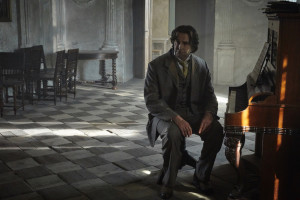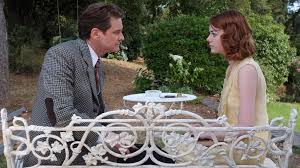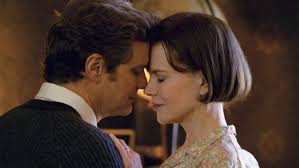The Happy Prince (Film)
 Rupert Everett has reached a new pinnacle in his career with the release of his new film “The Happy Prince.”
Rupert Everett has reached a new pinnacle in his career with the release of his new film “The Happy Prince.” Rupert Everett has reached a new pinnacle in his career with the release of his new film “The Happy Prince.”
Rupert Everett has reached a new pinnacle in his career with the release of his new film “The Happy Prince.” Woody Allen makes about one film every year. When his films are good, they are very good, and when they are mediocre, they are disappointing. His new film – Magic in the Moonlight – falls into the later category.
Woody Allen makes about one film every year. When his films are good, they are very good, and when they are mediocre, they are disappointing. His new film – Magic in the Moonlight – falls into the later category.
Allen has been on a roll the last ten years. His output has included Blue Jasmine, for which Cate Blanchett won a 2014 Best Actress Oscar for her role as a socialite who’se life changes for the worse; Vicky Cristina Barcelona, winning Penelope Cruz a 2008 Best Supporting Actress Oscar; To Rome with Love; Midnight in Paris; Cassandra’s Dream and Match Point. The 79 year-old writer, director and actor has had a career that has spanned over 50 years, and there seems to be no slowing down for him. He’s already at work on his next project – called ‘Untitled Woody Allen Project” now that Magic in the Moonlight is in cinemas. It won’t be winning any awards like some of his previous films. It’s a cute film, that’s it, there’s no other way to describe it.
Similar in plot to Allen’s 2010 film You Will Meet a Tall Dark Stranger, where divorcee Gemma Jones sees a fortune teller for spiritual advice, in Magic in the Moonlight we get a main character who is psychic medium using seances to speak to the dead, and a magician who believes the psychic is a fake.
Set in 1920 south of France, Colin Firth plays Chinese magician Wei Ling Soo, who is actually Englishman Stanley Crawford, a well-known magician, world famous yet anonymous, whose neatest trick is to disappear and reappear in a different spot in the same room. He’s also cynical, grouchy, and not very pleasant to be around when he’s off stage. He hears about a woman who has amazing psychic abilities, so he goes on a mission, along with his life-long friend Howard (Simon McBurney) to see what this psychic is all about and to try to debunk her. The psychic turns out to be lovely Sophie Baker (Emma Stone), an American from Tennessee. Sophie and her mother (Marcia Gay Harden) are in the South of France staying at an opulent house at the invitation of the very wealthy Catledge family, including the matriarch Grace (a Jacki Weaver – having the same facial expressions she has in all of her other films, though this time with more makeup), and her son Brice (Hamish Linklater) – who holds a candle to and romances Sophie to the point of singing songs to her on his tiny ukelele. They are convinced that Sophie can help Grace contact Grace’s late husband.
Crawford shows up at the Catledge mansion pretending to be a businessman named Stanley Taplinger. Immediately he dismisses her as a fake, though she seems to tell him events in his life that she couldn’t possibly know about. But during one seance where Sophie allegedly contacts Graces husband, there are knocks on a door and a candle floats in the air, Crawford (Taplinger) begins to think that Sophie’s talents are for real. He even confesses to his aunt who lives nearby (Eileen Atkins) that he believes her powers could actually be real. What follows next is a bit predictable. Crawford slowly starts falling for Sophie, especially after one day when they visit Crawford’s aunt and their car breaks down in heavy rain, they spend time with each other in a planetarium, drying off and learning about each other. By this time Sophie knows that Taplinger is actually Crawford who is actually Soo, and that he has a fiancée back home in London.
So Crawford slowly starts falling in love with Sophie, even though Brice is still very much in the picture. Crawford even confesses this to his aunt who tells him to go for it, coaxing out of him his true feelings for Sophie. The rest plays out like you would expect it, with a very predictable ending that is not very original.
Magic in the Moonlight has the same sort of romanticism these as Allen’s Midnight in Paris and To Rome With Love. In these three films, love is in the air and there’s a question but yet always a certainty if the two leads will wind up with each other or not. But Magic in the Moonlight is missing some of the Woody Allen formula. Sure, Firth is excellent as the doubting magician, and Stone is glowing everytime she is on screen, and the rest of cast (bar Weaver) are all just fine. But this is Allen’s show, and we can’t help but realize that there is not much magic in Magic in the Moonlight.
 Christine wakes up everyday remembering nothing. She lives with a man who says he’s her husband, but she doesn’t remember him. One day she discovers the shocking truth about him, and the family she used to have, in the new film Before I Go To Sleep.
Christine wakes up everyday remembering nothing. She lives with a man who says he’s her husband, but she doesn’t remember him. One day she discovers the shocking truth about him, and the family she used to have, in the new film Before I Go To Sleep.
 The Railway Man is based on the true story and best-selling memoir by Eric Lomax, a British Army Officer who has a hard time dealing with his war past when he was sent to a Japanese prisoner of war camp in 1942.
The Railway Man is based on the true story and best-selling memoir by Eric Lomax, a British Army Officer who has a hard time dealing with his war past when he was sent to a Japanese prisoner of war camp in 1942.






